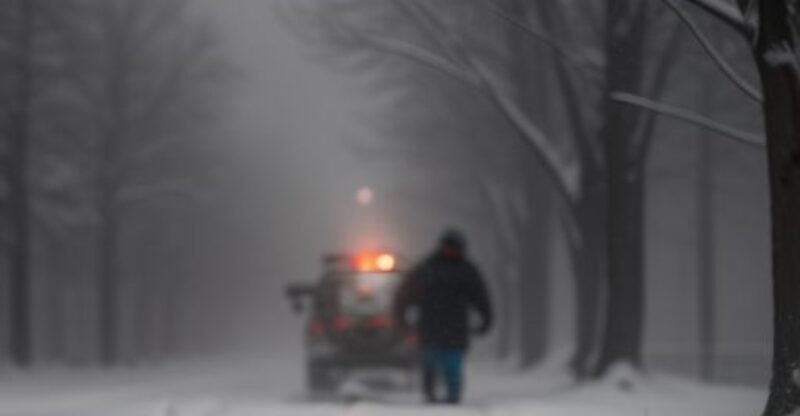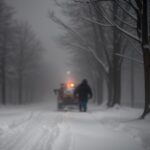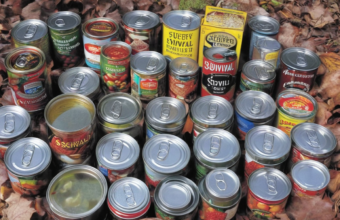Wild Weather: Gear for Surviving Storms! – Unleashing the Power of Preparedness
When the skies darken and the winds howl, do you find yourself questioning your readiness? Welcome to your ultimate guide to weathering any storm.
We dive into the heart of wild weather, exploring the essential gear designed to keep you safe and secure. From the mightiest hurricane to the most ferocious blizzard, we’ve got you covered.
As we delve deeper into the world of storm survival, we’ll reveal the key elements of a well-prepared kit and the importance of understanding the unpredictability of nature. You’re in the right place to arm yourself with knowledge and gear against the relentless forces of Mother Nature.
Stay tuned as we navigate through the storm, ensuring you’re prepared to face whatever wild weather comes your way.
What is the best storm survival gear?
When it comes to wild weather, it’s essential to have the right gear for surviving storms. One of the top pieces of equipment is a high-quality waterproof jacket. This gear helps to keep you dry and protect against hypothermia. Another crucial item is a sturdy pair of waterproof boots. They not only keep your feet dry but also provide traction on slippery surfaces.
- Emergency Blanket: Compact and lightweight, this gear is designed to retain up to 90% of your body heat, making it a must-have in your storm survival kit.
A hand-crank radio is also a valuable piece of storm survival gear. It allows you to receive weather updates and emergency broadcasts even when the power is out. A reliable flashlight with extra batteries is indispensable for navigating in the dark during power outages.
For nourishment during extended periods without power, non-perishable food items and a manual can opener are essential. A portable water filter is equally important, ensuring you have access to clean drinking water.
First aid kit is another vital component of your storm survival gear. It should include bandages, antiseptic wipes, tweezers, medical tape, and pain relief medication.
Remember, the best storm survival gear is the one that keeps you safe, warm, and dry during wild weather. It’s crucial to check and update your gear regularly to ensure it’s in good working condition when you need it the most.
How to waterproof your survival gear?
When bracing for wild weather, having waterproof survival gear is a non-negotiable. It’s crucial to ensure that your gear remains dry, functional, and reliable during stormy conditions. One of the most effective ways to waterproof your gear is by using a silicone-based water repellent spray. This spray creates a resilient layer of protection against moisture, keeping your gear dry and functional.
Waterproofing bags is another crucial step. Use waterproof liners or bags to keep your items dry. These bags are designed to resist water penetration, keeping your gear safe from the elements.
Another method is the use of seam sealers. These are used to waterproof the seams of tents and rain gear. Apply the sealer along the seams and let it dry for a durable water-resistant barrier.
When it comes to clothing, opt for synthetic materials like nylon or polyester, which are inherently water-resistant. You can further enhance their resistance by applying a durable water repellent (DWR) treatment.
Remember, even the best waterproofing methods require regular maintenance. Always check your gear for any signs of wear and tear, and reapply waterproofing treatments as needed. By taking these steps, you can ensure that your survival gear is ready to withstand any storm that comes your way.
Can survival gear withstand extreme weather?
Survival gear is designed to brave the elements, but can it truly hold up against the force of extreme weather? The answer largely depends on the quality and design of the gear. High-end survival gear is typically engineered to withstand harsh conditions, including torrential rain, blizzards, and gale-force winds. This resilience is often due to the use of durable materials like Gore-Tex or Cordura, which provide excellent resistance against both wind and water.
Storm survival gear often includes items like emergency blankets, which are designed to retain body heat in cold conditions. These blankets are usually made from mylar, a material known for its thermal properties and ability to reflect heat back towards the body. In addition, survival gear often includes windproof and waterproof clothing, which can provide crucial protection against hypothermia in extreme weather conditions.
Some of the most vital pieces of survival gear include:
- Tents and shelters designed for extreme weather, often featuring reinforced structures and heavy-duty materials.
- Survival sleeping bags, which are typically designed with a bivvy cover to protect against rain and snow.
- Emergency food and water supplies, often designed to withstand extreme temperatures and have a long shelf life.
However, it’s important to note that no survival gear can guarantee safety in all extreme weather scenarios. The unpredictability and severity of wild weather can sometimes exceed the limits of even the most robust gear. Therefore, understanding weather patterns, having a plan, and knowing when to seek shelter can be just as important as having the right equipment. Remember, survival gear is a tool to aid survival, not a foolproof solution against the wrath of Mother Nature.
What are essential items for a survival kit?
In the face of Wild Weather, it is crucial to be prepared with the right gear for surviving storms. The first and foremost essential item is a durable, waterproof backpack to house all your survival items. This bag should be lightweight and comfortable to carry, ensuring your mobility isn’t compromised during a storm.
A vital component of your survival kit should be a high-quality, wind-resistant tent. This shelter will provide a safe space to rest and protect you from the harsh elements. Don’t forget a sleeping bag designed for extreme weather conditions, offering warmth and comfort in cold temperatures.
Next, a reliable source of light, such as a wind-up torch or headlamp, is indispensable. You never know when you might need to navigate in the dark. A multi-tool, including a knife, screwdriver, can opener, and scissors, can be a lifesaver in a variety of situations.
Food and water are essential for survival. Pack high-energy, non-perishable food items, and at least three days’ worth of water. Additionally, a water purification device or tablets can provide safe drinking water if your supply runs out.
Health and safety items, including a first-aid kit, personal hygiene products, and necessary medications, should also be included. A weather radio, preferably solar or hand-crank powered, will keep you informed about the storm’s progress.
Lastly, don’t forget to pack a map and compass. Even in this era of GPS, traditional navigation tools can be invaluable when technology fails. Remember, preparation is key when it comes to surviving wild weather and storms.
Does survival gear expire?
When preparing for wild weather, a common question that arises is, “Does survival gear expire?” It’s important to note that not all survival gear comes with an expiration date. However, some items, such as emergency food supplies and water, do have a shelf life.
For instance, canned goods and packaged meals typically last between 2 to 5 years, while bottled water can last up to two years if stored properly. It’s crucial to check these items regularly and replace them as needed to ensure they’re safe to consume during a storm.
On the other hand, gear like emergency blankets, flashlights, and first aid kits don’t technically expire, but they can degrade over time or with use. Batteries can leak and corrode, medical supplies can become less effective, and materials can wear out. Therefore, it’s recommended to inspect these items periodically and replace any that show signs of wear and tear.
- Emergency Food Supplies: 2-5 Years
- Bottled Water: Up to 2 Years
When it comes to surviving storms, your gear’s reliability is paramount. Regular checks and maintenance of your equipment can make the difference between a minor inconvenience and a life-threatening situation. Always remember, the goal is not just to survive, but to thrive in the face of wild weather.
How to pack survival gear for storms?
When it comes to surviving storms, the first rule of thumb is to have a well-prepared emergency kit. It should contain essential items such as a flashlight, batteries, first-aid supplies, and a multi-tool.
A waterproof bag is a must-have to keep your gear dry. This bag can house your electronics, important documents, and other items that need to stay dry during a storm.
Warm clothing is another vital part of your survival gear. Layering clothes is recommended as it allows for easy adjustment to changing temperatures. A waterproof and wind-resistant outer layer is also essential to protect you from the elements.
Food and water are crucial for survival. Pack enough non-perishable food and bottled water to last for at least three days.
A portable weather radio can keep you updated on the storm’s progress, while a whistle can help you signal for help if necessary.
Remember to include personal items such as prescription medications, glasses, and important documents.
Lastly, a tent or emergency blanket can provide shelter and warmth. Choose a tent that is easy to set up and can withstand strong winds.
Packing appropriately for a storm is a crucial step in ensuring your safety. By following these steps, you can be prepared for any wild weather that comes your way.
What are the lightweight survival gear options?
When faced with wild weather and storms, having the right survival gear is crucial. Among the top choices, a waterproof tent stands out. Its lightweight design makes it easy to carry, yet it offers protection from rain and wind.
A sleeping bag designed for extreme weather conditions is another must-have. Look for one that is both lightweight and offers high insulation. This ensures that you stay warm even in the coldest environments.
Stormproof matches are essential for starting fires in wet conditions. They’re not only lightweight but also very reliable. A portable water filter is another lightweight option to consider. It’s crucial for ensuring you have access to clean, safe drinking water in any situation.
Don’t forget about emergency food rations. Opt for lightweight, high-calorie options that can provide you with the energy you need to survive.
A hand-crank radio can keep you informed about weather conditions and potential rescue efforts. It’s lightweight, doesn’t require batteries, and can even charge your phone in an emergency.
Remember, the key to surviving wild weather is preparation. Equip yourself with the right gear, and you’ll be ready to face any storm that comes your way.
Is there specific survival gear for different storms?
Indeed, there is specific survival gear designed for different types of storms. For instance, during a hurricane, survival gear would typically include a battery-operated radio, flashlights, extra batteries, and a first aid kit. It’s also critical to have a three-day supply of non-perishable food and water for each person in your household.
In contrast, when preparing for a snowstorm, the gear list changes slightly. Essential items include warm clothing, blankets, a shovel, and rock salt to melt ice on walkways. It’s also beneficial to have a supply of heating fuel and a properly vented stove or fireplace.
For tornadoes, the gear is different yet again. A helmet for each family member is essential to protect from flying debris, along with sturdy shoes to prevent foot injuries. A whistle to signal for help if trapped and a portable charger for your phone are also crucial.
- Hurricane gear: battery-operated radio, flashlights, extra batteries, first aid kit, three-day supply of non-perishable food and water.
- Snowstorm gear: warm clothing, blankets, a shovel, rock salt, supply of heating fuel, properly vented stove or fireplace.
- Tornado gear: helmet, sturdy shoes, whistle, portable phone charger.
The type of storm dictates the gear you need. It’s essential to stay informed about the weather in your area and have the appropriate survival gear on hand. Always remember, the key to surviving any storm is preparation.
Concluding Thoughts on Wild Weather: Gear for Surviving Storms!
In the face of unpredictable weather conditions, having the right survival gear is crucial. As we’ve discussed, the best storm survival gear includes items that are waterproof, durable, and lightweight. It’s also important to remember that different storms may require specific gear.
Waterproofing your survival gear is a key step, ensuring that your equipment remains functional even in the most extreme conditions. Remember, survival gear can expire, so regular checks and updates are necessary to maintain their effectiveness.
Packing your gear efficiently for storms is another important aspect. The essential items for a survival kit are those that can help you stay safe, warm, and hydrated. Always remember to pack light, but also consider the type of storm you might face.
Looking forward, we may see advancements in survival gear technology that make it even more resilient and versatile. Trends such as gear that is lighter, more compact, and more multifunctional are on the horizon.
In conclusion, understanding and investing in the right survival gear for wild weather conditions can be the difference between life and death. Stay prepared, stay updated, and always be ready to face the storm.












